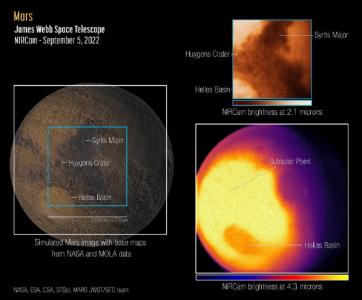your current location is:Home > TechnologyHomeTechnology
Human's first planetary defense experiment was successful: NASA's collision changed the orbit of a planet
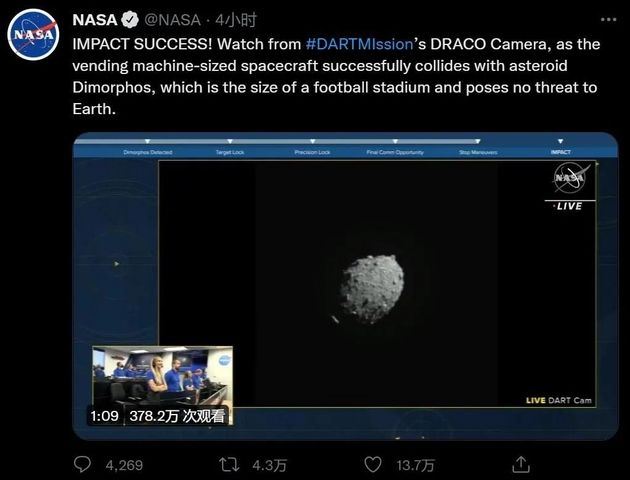
According to the meteorite impact, about 65 million years ago, an asteroid with a diameter of 10 kilometers and a volume equivalent to a medium city fell from the sky. It crashed into a huge crater in the earth, causing flash floods and plummeting temperatures, and the earth was covered in dust and did not see sunlight all year round. The "earth overlord" dinosaurs at that time could not adapt to this strong environmental change and eventually became extinct.
This is a well-known conjecture. In fact, the celestial bodies that hit the earth are not only once in tens of millions of years: a large number of asteroids collide with the earth every year, and most of them are decomposed in the earth's atmosphere.
In theory, the risk of an asteroid hitting Earth does exist. On February 15, 2013, the asteroid impact in Chelyabinsk, Russia, caused a wave of panic.

In order to avoid a dinosaur-like tragedy, various methods of preventing asteroids from hitting Earth have been studied.
Now, an unmanned spacecraft launched from Earth has successfully hit an asteroid during NASA's Double Asteroid Redirection Test (DART), which NASA says is the world's first "Planetary Defense" test.
The asteroid that was hit this time is called Dimorphos, and the spacecraft launched from the earth successfully used the impact to push the planet out of its original orbit, providing a reference for preventing dangerous stars from hitting the earth in the future.
Dimorphos is an asteroid moon orbiting the near-Earth asteroid Didymos, which astronomers discovered more than two decades ago, meaning "twin" in Greek. Didymos is about 780 meters wide, and the Dimorphos that run around it have a diameter of 160 meters, and its name means "two forms".
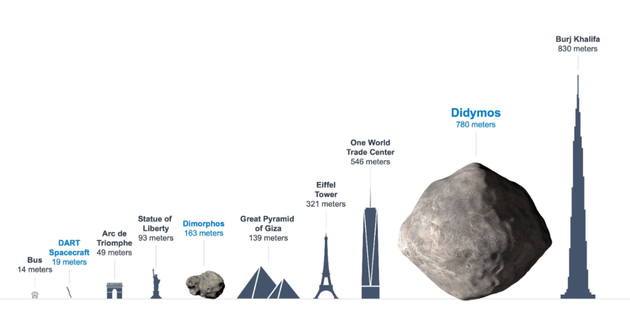
Since the asteroid system poses no threat to Earth, it makes a good target for experiments. At the time of impact, they were relatively close to Earth—just under 11 million kilometers.
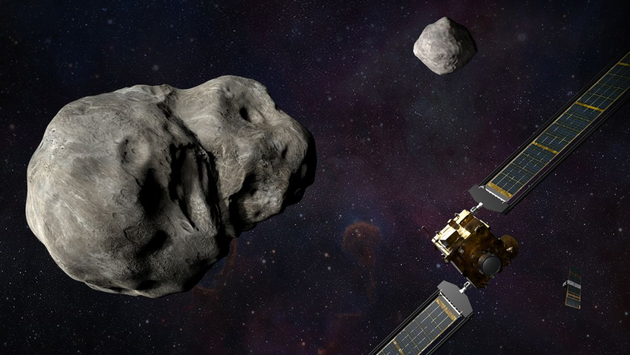
"As far as we know, our first planetary defense test was a success," said Elena Adams, DART mission systems engineer at the Johns Hopkins University Applied Physics Laboratory (JHUAPL), after the successful impact. "I think Earthlings can sleep peacefully because of this. Of course, I will."
The DART experiment is the first attempt at planetary deflection technology for the purpose of protecting the Earth. "For the first time ever, we have been able to measurably change the orbits of celestial bodies in the universe," said Robert Braun, head of the Johns Hopkins University Applied Physics Laboratory's Space Exploration Unit.
Despite the small target chosen, the fast impact would change only 1% of the speed at which Dimorphos orbits Didymos, which doesn't sound like much, but it's enough change to be seen through a telescope.
According to its original orbit, Dimorphos circles Didymos every 11 hours and 55 minutes. It is expected that after the impact, the period may change to 11 hours and 45 minutes. DART team members say it will take scientists about two months to determine whether the asteroid's orbit has changed.
Space-based telescopes such as the Hubble, Webb and Lucy missions also focused on the event.
At 7:14 p.m. ET on September 26, the DART mission spacecraft crashed into Dimorphos at 14,000 mph. For this impact, as early as the end of last year, the spacecraft set off from Earth and weighed about 610 kilograms at launch. It carries about 50 kilograms of hydrazine-type propellant for spacecraft braking and attitude control, and about 60 kilograms of xenon to operate the ion propulsion technology demonstrator.
About an hour before the impact, the spacecraft's navigation system locked onto Dimorphos. The spacecraft's main camera sends a picture to Earth every second until the spacecraft hits the asteroid and the picture goes black.
As DART approaches Dimorphos, the asteroid transforms from a mysterious bright spot to a detailed landscape of boulders, cliffs, and shadowy terrain.
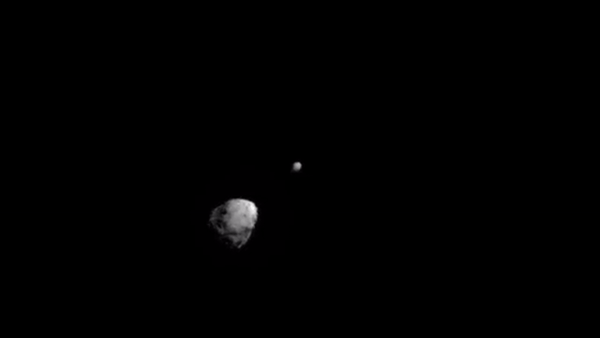
The following image, taken by the spacecraft about 20 minutes before impact, includes a binary star system consisting of Didymos (large) and Dimorphos (small):
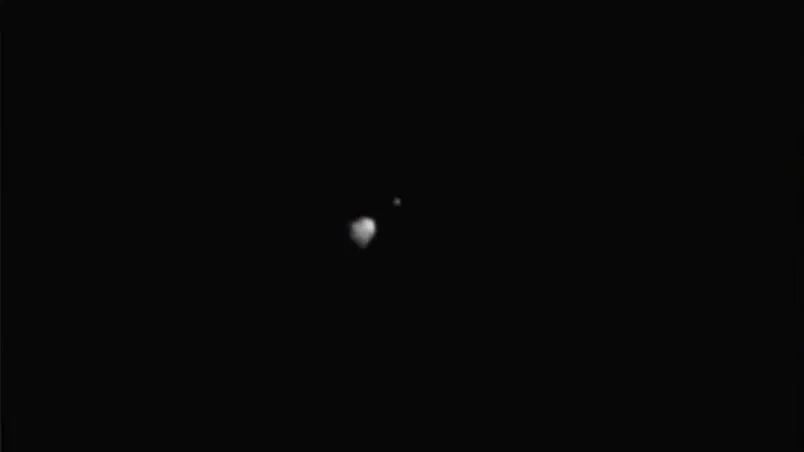
Two minutes before impact, the Dimorphos asteroid was more clearly visible from the spacecraft's perspective:
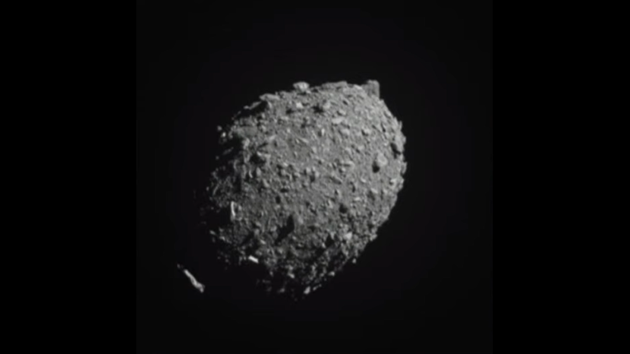
In the scheme of changing the orbit of the asteroid, people have studied methods such as installing thrusters on the planet and using high-yield nuclear weapons to blast them. However, the spacecraft of this DART mission produces very little movement and is about the size of a golf cart. On each side of the spacecraft is a fully deployed solar panel about 8.5 meters long.
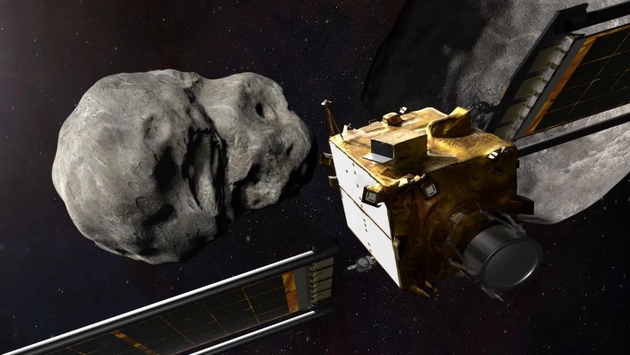
According to the plan, the spacecraft will leave a 10 to 20 meter "crater" on Dimorphos after the impact. Since the spacecraft itself has been destroyed after the "suicide impact", changes in the surface of Dimorphos will be recorded in the air by the companion cube satellite LICIACube provided by the Italian Space Agency. Three minutes after impact, the small satellite will fly past Dimorphos to capture images and video. The images, while not immediately available, will be beamed back to Earth in the days and weeks after the collision.

The DART mission is the first demonstration of a "kinetic impactor" in NASA's planetary defense program, designed to ram a spacecraft into an asteroid to alter its orbit. The mission collected real asteroid impact data for the first time, which will be input into computer models in the future to measure the size of the spacecraft and the speed at which it will take to resist an asteroid that is at risk of impacting the Earth.
According to NASA's research, about 40% of large asteroids can reach a diameter of more than 140 meters, and these planets may pose a threat to the earth. If a potentially hazardous asteroid is discovered five or 10 years before the expected impact, the "kinetic impactor" approach could effectively protect Earth.
Previous:Apple AirPods Pro2 users report that they have random disconnection problems
Next:High roller games? Netflix announces game development studio in Finland
related articles
Article Comments (0)
- This article has not received comments yet, hurry up and grab the first frame~






